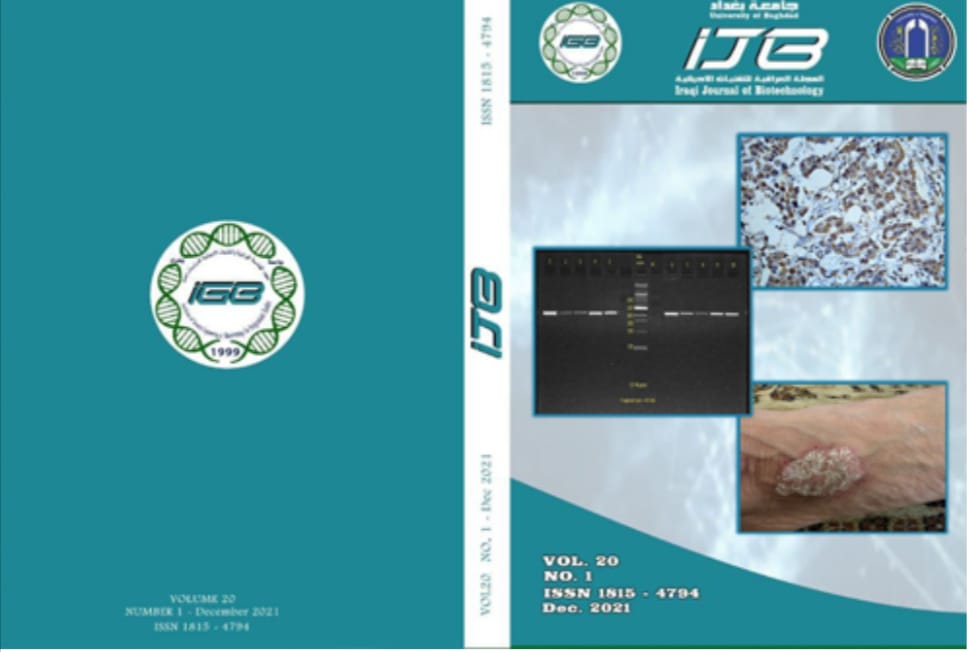Antioxidant and Cytotoxic Effect of Total Flavonoids from Cuscuta Campestris Yunck
Abstract
The present study was conducted to investigate the antioxidant and cytotoxicity of purify flavonoids that isolated from Cuscuta campestris. Three solvent (methanol, Dichloromethane, ethyalacetate) were used to extracted flavonoid.were measured(128.5,85.1,98.3 mg Rutin / 100 gm) respectively, the type and quantity of flavonoid were detected by HPLC .The result showed that the plant extract contains flavonoids (Rutin ,Qurcetine, Kaempferol, Apigenin, Luteolin) (124.0, 130.5, 80, 9, 58.7, 51.5) µg/gm respectively. The antioxidant activities of purify flavonoids of Cuscuta campestris were screened using DPPH (2,2-diphenyl-1-picrylhydrazyl). the results revealed that the radical scavenging activity is effective and activity increase when the concentrations increase. The highest percentage of free radical scavenging is at of 200µg/mL (82.37) a concentration compared with control (13.20). Some species of Cuscuta possess anticancer activity on various cell lines (colon HT29, MCF10). Using MTT assay. The cytotoxic activity purify flavonoids extracted from Cuscuta campestris. The results showed that the administration of different doses (12.5,25,50,100,200) µg/mL after 72h of Cuscuta campestris resulted in decreased viability of(HT29) cells which have higher in inhibition rate compared with control (88.7,13.20) for HT29, MCF10 respectively. This plant may represent promising source of herbal treatment for colon cancer and is thus a safe and promising anticancer drug candidate.


